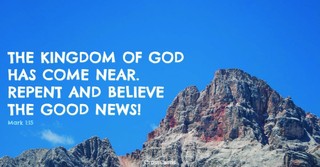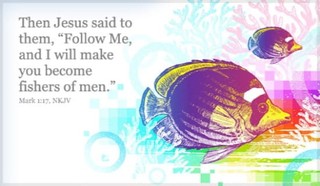- Recent Translations
- All Translations
Mark 1:6
Share
Settings
Mark 1:6 Meaning and Commentary
And John was clothed with camel's hair
This is a description of John by his clothes; (See Gill on Matthew 3:4), to which may be added, that it was usual for penitents, and men of austere lives, and of the first class for holiness and religion, to live in deserts, to fare hard, and wear coarse apparel. Mention is made of one man, who is called, (atyuwud Ntn) F6, because he had on a garment of goat's hair, which cut his flesh, that so it might atone for him, for he was a penitent:
and with a girdle or skin about his loins;
a leathern one, as in ( Matthew 3:4 ) , not a golden one, such as the high priest wore, though the F7 Jews call John an high priest: he was indeed of the priestly race: his father was a priest, but he did not wear a priestly girdle, nor any of the priest's garments;
and he ate locusts and wild honey.
The Ethiopic version renders it, "honey of earth bees": in Ethiopia was a sort of bees, little bigger than flies, and without a sting, which had their hives in the earth, where they produced honey of a white colour, very pleasant and wholesome; and this is thought, by the Ethiopians, to be the honey which John ate F8; but then there must have been the same in Judea, which does not appear. Moreover, in the land of Judea, there was (Myrmt) (lv vbd) , "the honey of palm trees"; and it is said F9, that it is the best honey; and therefore the Scripture calls, honey of the palm trees, honey; and the palm trees which grow in the plains and valleys, abound most with it; wherefore there was much of this about Jericho, the city of palm trees: there was also (Mynyat lv vbd) , "honey of figs"; which in some places was in great plenty:
``R. Jacob ben Dosthai says F11, it is three miles from Lud to Ono (see ( Ezra 2:33 ) ) one time I walked before break of day, and I went up to my ankles in honey of figs.''Dr. Lightfoot thinks, this was the honey the evangelist speaks of, and John ate of. I have observed on ( Matthew 3:4 ) that with the Jews, the honey of bees was lawful to eat F12 though the bees themselves were not. So Jonathan ben Uzziel paraphrases, ( Leviticus 11:20 ) ,
``Let the species of bees be an abomination to you, but the honey of bees may be eaten;''they being reckoned among reptiles that fly: and it may be further observed, that according to them, the honey of wasps and hornets was lawful to be eaten, as well as the honey of bees F13 and this may be truly called, as here, wild honey; for which they give these reasons {n}, because it is not of the substance of their bodies, but they gather it from herbs; and because in the same manner as bees, they take it into their bodies, but do not produce it from them; though some of the doctors dissent, and think it not lawful F15.
F6 T. Bab. Sabbat, fol. 56. 2. Vid. Buxtorf. not. in Sepher Cosri, p. 156, 157.
F7 Gauz. Tzemach David, par. 1. fol. 25. 2.
F8 Ludolph. Lex. Ethiop. p. 447.
F9 Maimon. & Bartenora in Misn. Biccurim, c. 1. sect. 10.
F11 T. Bab. Cetubot, fol. 111. 2.
F12 Vid. Piske Tosephot Becorot, art. 13.
F13 Misn. Macshirin, c. 6. sect. 4. T. Bab. Becorot, fol. 7. 2.
F14 Maimon. Hilch. Maacalot Asurot, c. 3. sect. 3. Ib. & Bartenora in Misn. Macshirin, ibid.
F15 In Piske Tosephot Becorot, art. 13. Maggid Misna in Maimon. Hilch. Maacolot ib.


